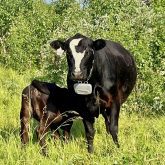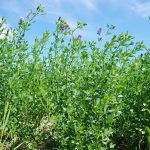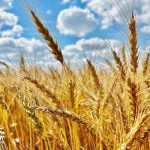DNA analysis has shown that domestic cattle descended from wild ox in southwestern Asia some 10,500 years ago. An international team of scientists from the Centre National de la Recherche Scientifique and National Museum of Natural History in France, the University of Mainz in Germany, and University College London in the U.K. conducted the study by first extracting DNA from the bones of domestic cattle excavated in Iranian archaeological sites.
Their conclusion: All cattle are descended from as few as 80 animals
Over the centuries Homo sapiens migrated around the world from the Middle East during what archeologists refer to as the Agriculture Revolution, fueled primarily by domestication of wheat. It meant the end to the hunter-gatherer existence that prevailed, replaced by the more sedentary lifestyle of organized agriculture.
Read Also

The Canadian Cattle Association’s international advocacy efforts
Global ag policies affect Canadian food policy, so the Canadian Cattle Association participates in international and domestic forums
As Homo sapiens slowly initiated their intercontinental drift, over 1,000 breeds of cattle emerged, patterned specifically on the need for milk and meat in line with what environments would yield. Climate and temperature played a major role in what nature offered succeeding generations.
At about the same time, the evolutionary cascade started for cattle as they moved from the Middle East. Circadian rhythms became an important feature of evolution and the environmental-induced transformation that followed.
Circadian rhythm is simply defined as a daily cycle observed in many living organisms. However, the circadian clock governs rhythmicity within an organism far beyond the sleep-activity cycle. In humans and most mammals, there are approximately 24-hour rhythms in body temperature, blood pressure, circulating hormones, metabolism, retinal-induced responses and a host of other physiological parameters. Circadian rhythms influence evolution.
Mammals synchronize their circadian activity to cycles of light and darkness. The suprachiasmatic nucleus in the midbrain receives signals related to light and dark, which synchronize independent circadian clocks throughout the body. These peripheral clocks include humoral signals, metabolic factors and body temperature. Thousands of genes are brought to unique phases through local feedback mechanisms. The molecular clock and proteins produced by its influence cause changes in the copying of genetic information. Circadian clocks are not driven by sunlight, but synchronized by the 24-hour patterns of light and temperature produced by the earth’s rotation.
Disease susceptibility changed as cattle moved into different environments and were exposed to different pathogens. Good examples include malignant catarrhal fever (a highly pathogenic virus for cattle harboured naturally by wildebeest) and clostridial diseases such as blackleg and tetanus. Foot-and-mouth disease in cattle has been described as a serious threat to cattle herds since the 1500s and is one of the most contagious viruses known in cattle. Susceptibility to babesia and anaplasmosis fluctuates with tick populations, while susceptibility to parasites are functions of where, when and how cattle graze.
Research teams have shown that changes in the natural light-dark cycle perturb the circadian system. Purdue University revealed the central role of circadian clocks in regulating mammary development during lactation. Disrupting circadian clocks of dairy cows during late gestation by exposing them to chronic light-dark phase shifts changes milk output. Other disrupting factors include inappropriately timed food intake, physical activity and biological stress. Studies of cattle also indicate knowledge of the biology underlying circadian clock timing is critical to understanding how to maximize health and production efficiency.
Biological clocks play an important role in animal behaviour. Changes in behaviour are often associated with reproductive success. How reproductive females react to breeding bulls on pasture serves as an example. Disruptions in daily and temporal cycles could lead to complications affecting survival and overall health.
Several experimental findings indicate that endogenous circadian neural rhythms are generated within the suprachiasmatic nucleus of mammals. Rhythmic neural signals from the suprachiasmatic nucleus directly, or indirectly, appear to regulate many, if not all, biochemical, physiological and behavioural circadian rhythms.
Circadian system research is still in the early stages of development. Further progress in understanding the physiological mechanisms underlying the generation and expression of circadian rhythms will require new ways of looking at old problems.
Recognizing that circadian rhythms exist in most, if not all, animal life becomes an important part of managing livestock. While the study of the physiology of the circadian system is still in the early stages of development, and little is known about the importance of the normal functioning of the circadian system for the health and well-being of livestock, we only need to look at what happened in cattle and what evolution produced as a result in both dairy and beef breeds.
Interestingly, the mechanism of the circadian rhythms has been conserved in many different species, and misalignment between circadian rhythms and the environment results in evolutionary regression and lifespan reduction. For more, see Neuroscience and Biobehavioral Reviews at sciencedirect.com.

















